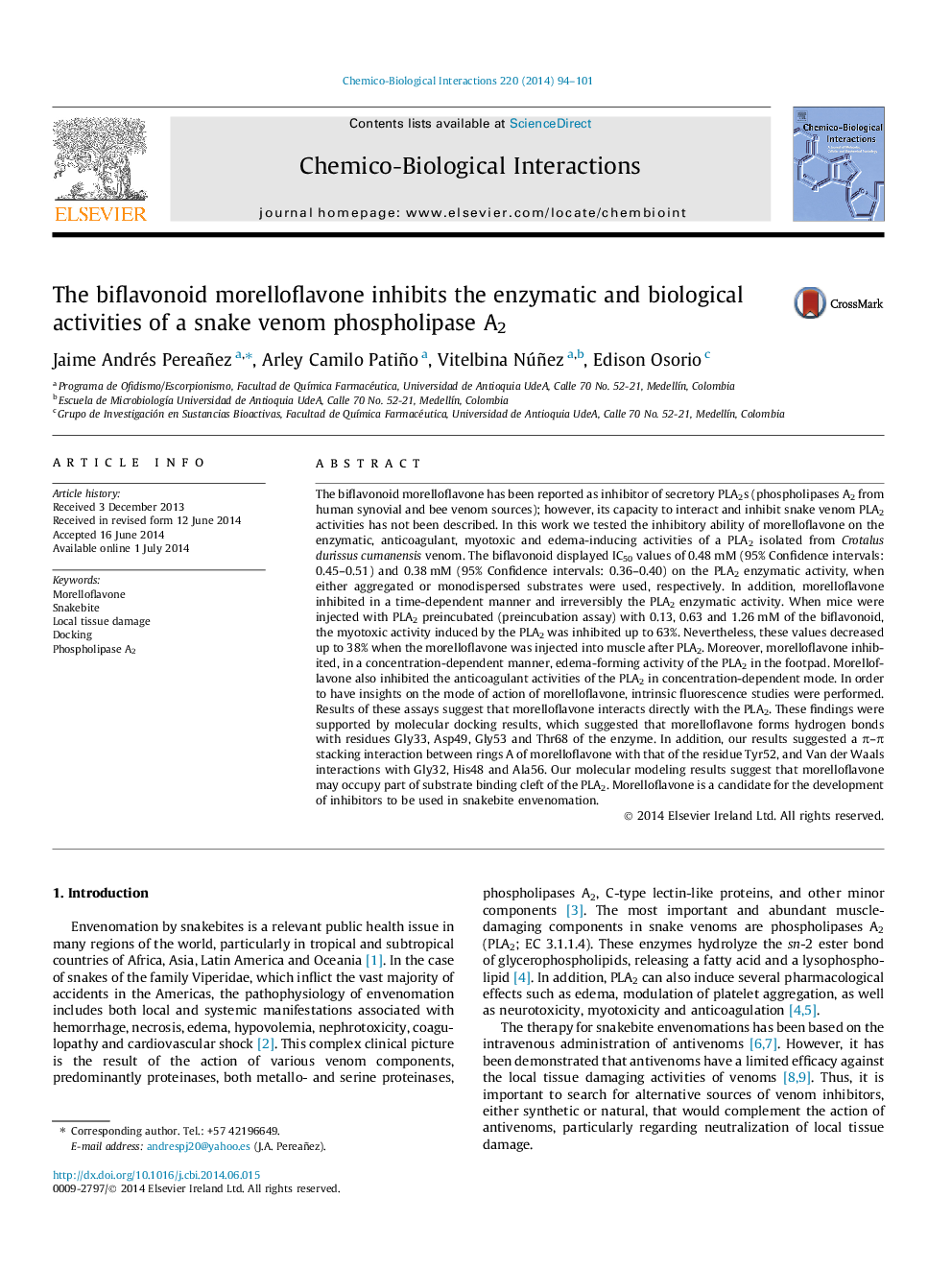| کد مقاله | کد نشریه | سال انتشار | مقاله انگلیسی | نسخه تمام متن |
|---|---|---|---|---|
| 5848019 | 1561621 | 2014 | 8 صفحه PDF | دانلود رایگان |

- Morelloflavone inhibited enzymatic activity of a snake venom PLA2.
- Morelloflavone partially inhibited myotoxic and edema-forming activities of the PLA2.
- Results suggest that morelloflavone interacts directly with the PLA2.
- Docking suggests that morelloflavone interacts with active site of the enzyme.
The biflavonoid morelloflavone has been reported as inhibitor of secretory PLA2s (phospholipases A2 from human synovial and bee venom sources); however, its capacity to interact and inhibit snake venom PLA2 activities has not been described. In this work we tested the inhibitory ability of morelloflavone on the enzymatic, anticoagulant, myotoxic and edema-inducing activities of a PLA2 isolated from Crotalus durissus cumanensis venom. The biflavonoid displayed IC50 values of 0.48Â mM (95% Confidence intervals: 0.45-0.51) and 0.38Â mM (95% Confidence intervals: 0.36-0.40) on the PLA2 enzymatic activity, when either aggregated or monodispersed substrates were used, respectively. In addition, morelloflavone inhibited in a time-dependent manner and irreversibly the PLA2 enzymatic activity. When mice were injected with PLA2 preincubated (preincubation assay) with 0.13, 0.63 and 1.26Â mM of the biflavonoid, the myotoxic activity induced by the PLA2 was inhibited up to 63%. Nevertheless, these values decreased up to 38% when the morelloflavone was injected into muscle after PLA2. Moreover, morelloflavone inhibited, in a concentration-dependent manner, edema-forming activity of the PLA2 in the footpad. Morelloflavone also inhibited the anticoagulant activities of the PLA2 in concentration-dependent mode. In order to have insights on the mode of action of morelloflavone, intrinsic fluorescence studies were performed. Results of these assays suggest that morelloflavone interacts directly with the PLA2. These findings were supported by molecular docking results, which suggested that morelloflavone forms hydrogen bonds with residues Gly33, Asp49, Gly53 and Thr68 of the enzyme. In addition, our results suggested a Ï-Ï stacking interaction between rings A of morelloflavone with that of the residue Tyr52, and Van der Waals interactions with Gly32, His48 and Ala56. Our molecular modeling results suggest that morelloflavone may occupy part of substrate binding cleft of the PLA2. Morelloflavone is a candidate for the development of inhibitors to be used in snakebite envenomation.
Journal: Chemico-Biological Interactions - Volume 220, 5 September 2014, Pages 94-101